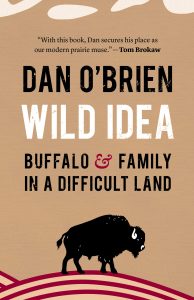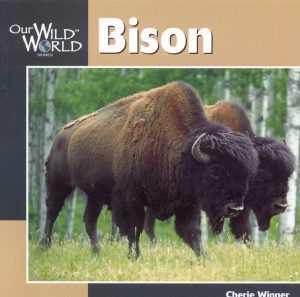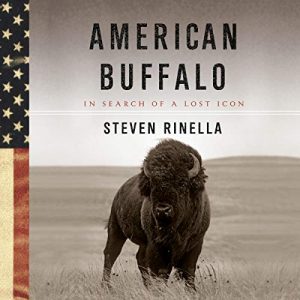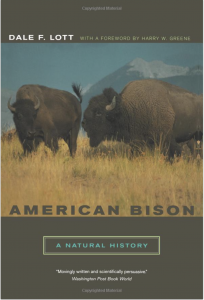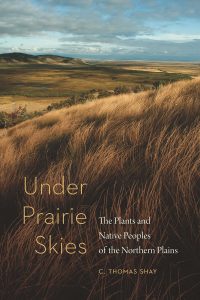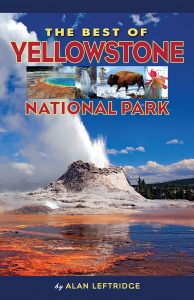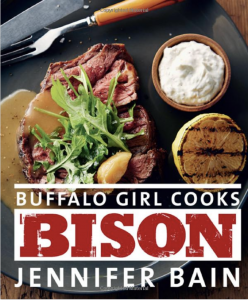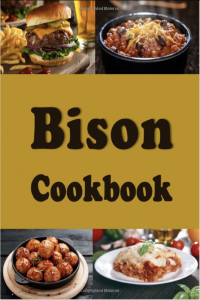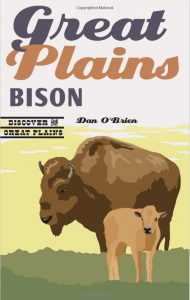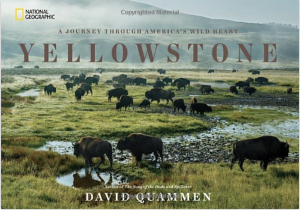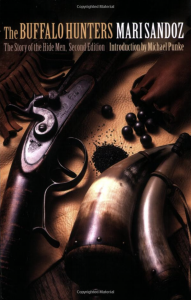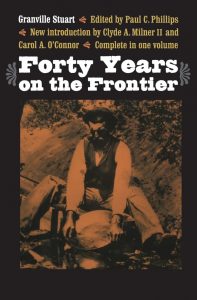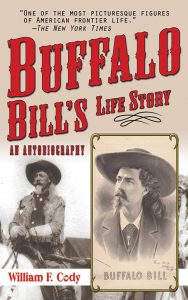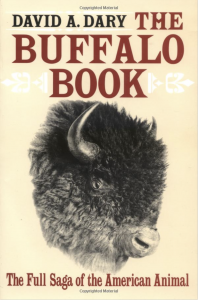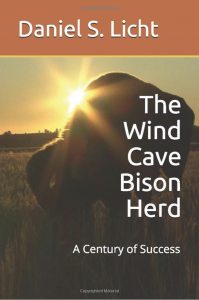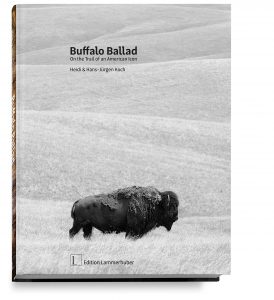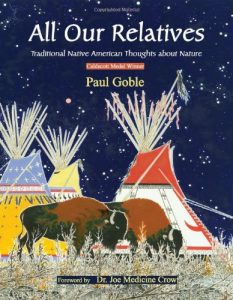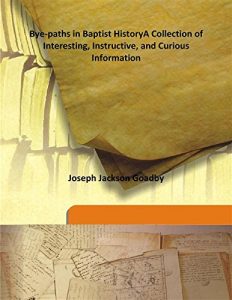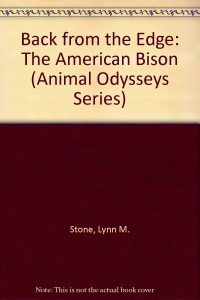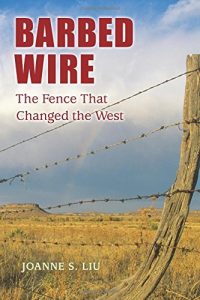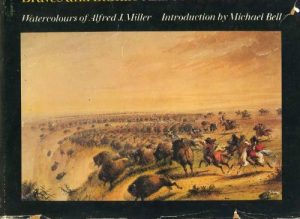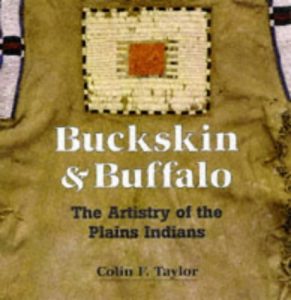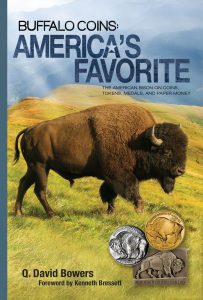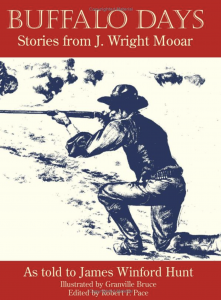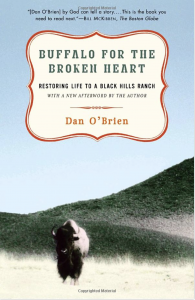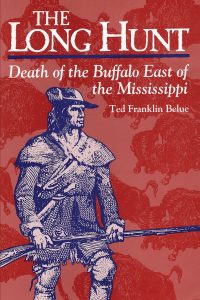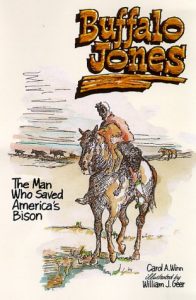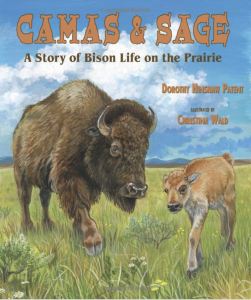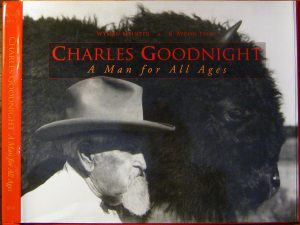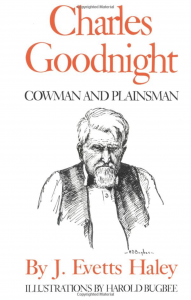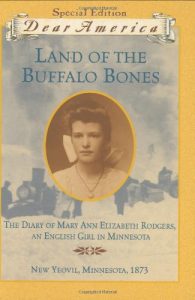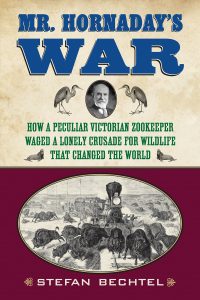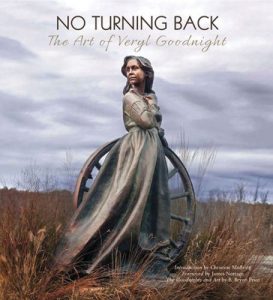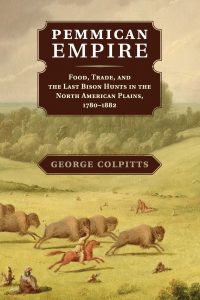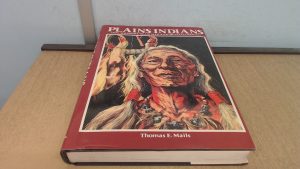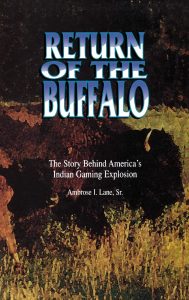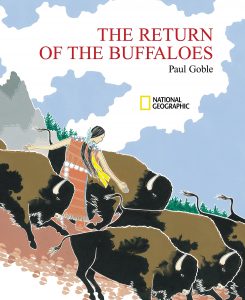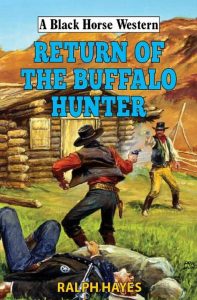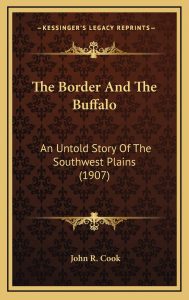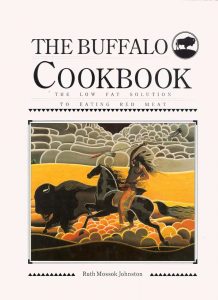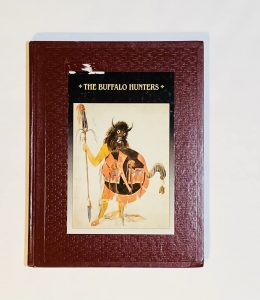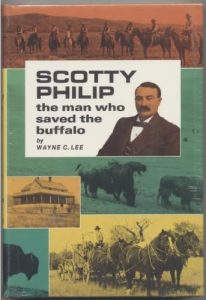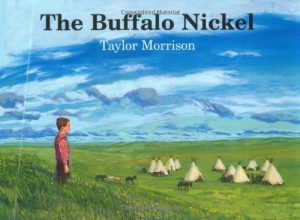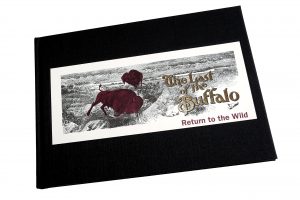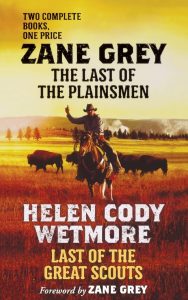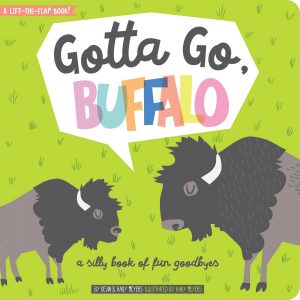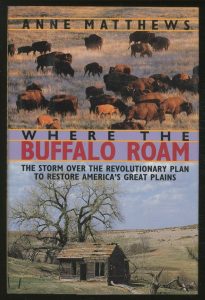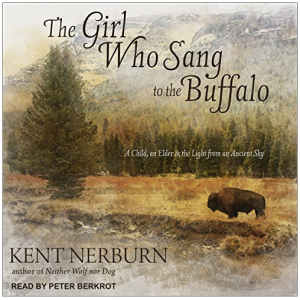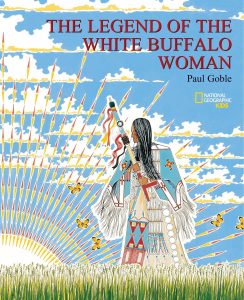Amazon links are affiliate links that benefit Meet My Neighbor Productions, Inc.
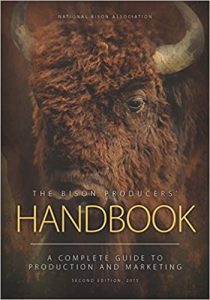
Bison Producer’s Handbook
This comprehensive book is packed with information for veteran bison producers and newcomers alike. More than 30 industry experts have collaborated to develop nearly 300 pages of useful, readable information on all aspects of bison marketing and production. The 2nd edition of the Bison Producer’s Handbook replaces the 1st edition, published in 2010, and expands on and updates the information included in that useful resource. This book comes FREE with a NBA Active, Allied Industry, Junior, Student Group and Life membership. Please visit www.bisoncentral.com to join the NBA today and receive this book along with the many other benefits a NBA membership offers. “An essential source of information for people getting started in the bison industry. It is also a valuable reference for established bison producers.” – Temple Grandin, author – Improve Animal Welfare: A Practical Approach
Wild Idea: Buffalo and Family in a Difficult Land
For more than forty years the prairies of South Dakota have been Dan O’Brien’s home. Working as a writer and an endangered-species biologist, he became convinced that returning grass-fed, free-roaming buffalo to the grasslands of the northern plains would return natural balance to the region and reestablish the undulating prairie lost through poor land management and overzealous farming. In 1998 he bought his first buffalo and began the task of converting a little cattle ranch into an ethically run buffalo ranch.
Wild Idea is a book about how good food choices can influence federal policies and the integrity of our food system, and about the dignity and strength of a legendary American animal. It is also a book about people: the daughter coming to womanhood in a hard landscape, the friend and ranch hand who suffers great tragedy, the venture capitalist who sees hope and opportunity in a struggling buffalo business, and the husband and wife behind the ranch who struggle daily, wondering if what they are doing will ever be enough to make a difference. At its center, Wild Idea is about a family and the people and animals that surround them—all trying to build a healthy life in a big, beautiful, and sometimes dangerous land.
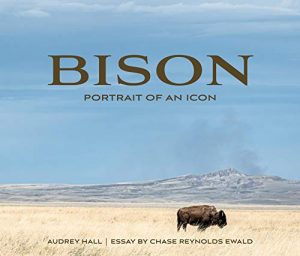
Bison: Portrait of an Icon
The first book of its kind, Bison: Portrait of an Icon tells the story of the bison―its history, majesty, cultural significance, and comeback story―through the stunning, dramatic photography of Audrey Hall. Even more, woven throughout these visually captivating photographs is an extended essay by author Chase Reynolds Ewald. Brought back from the brink of extinction, the bison today―with its rugged, primitive build, its remarkable speed and hardiness, its primeval wooly hide, and its sheer strength―is an icon as distinctly American as the bald eagle.
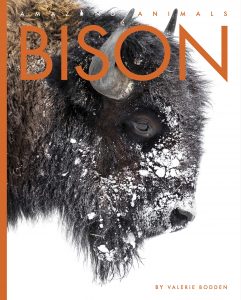
Bison (Amazing Animals)
Meet the biggest mammal in North America! Introduce elementary kids to bison, including the European species called wisent.
As national mammals of the United States, bison are captivating shaggy beasts that roam plains and forests. Readers explore this animal’s features like its distinctive shoulder hump and behaviors like wallowing with STEM-appropriate text and gorgeous photography. An end story shares a Native American folk tale of how the bison have got its hump.
A great nonfiction resource for student reports, animal units, and life science lessons. Includes table of contents, index, same-page definitions, and further resources.
Bison (Our Wild World)
Every title contains: -Where the animal lives, what it eats, when it sleeps, how it raises its young, and much more. -Over 30 vivid, full color photos and illustrations. -Sidebar ‘Fun Facts,’ an index and a list of useful Internet Sites.
American Buffalo: In Search of a Lost Icon
From the host of the Travel Channel’s The Wild Within.
A hunt for the American buffalo – an adventurous, fascinating examination of an animal that has haunted the American imagination.
In 2005, Steven Rinella won a lottery permit to hunt for a wild buffalo, or American bison, in the Alaskan wilderness. Despite the odds – there’s only a two percent chance of drawing the permit, and fewer than 20 percent of those hunters are successful – Rinella managed to kill a buffalo on a snow-covered mountainside and then raft the meat back to civilization while being trailed by grizzly bears and suffering from hypothermia. Throughout these adventures, Rinella found himself contemplating his own place among the 14,000 years’ worth of buffalo hunters in North America, as well as the buffalo’s place in the American experience. At the time of the Revolutionary War, North America was home to approximately 40 million buffalo, the largest herd of big mammals on the planet, but by the mid-1890s only a few hundred remained. Now that the buffalo is on the verge of a dramatic ecological recovery across the West, Americans are faced with the challenge of how, and if, we can dare to share our land with a beast that is the embodiment of the American wilderness.
American Buffalo is a narrative tale of Rinella’s hunt. But beyond that, it is the story of the many ways in which the buffalo has shaped our national identity. Rinella takes us across the continent in search of the buffalo’s past, present, and future: to the Bering Land Bridge, where scientists search for buffalo bones amid artifacts of the New World’s earliest human inhabitants; to buffalo jumps where Native Americans once ran buffalo over cliffs by the thousands; to the Detroit Carbon works, a “bone charcoal” plant that made fortunes in the late 1800s by turning millions of tons of buffalo bones into bone meal, black dye, and fine china; and even to an abattoir turned fashion mecca in Manhattan’s Meatpacking District, where a depressed buffalo named Black Diamond met his fate after serving as the model for the American nickel.
Rinella’s erudition and exuberance, combined with his gift for storytelling, make him the perfect guide for a book that combines outdoor adventure with a quirky blend of facts and observations about history, biology, and the natural world. Both a captivating narrative and a book of environmental and historical significance, American Buffalo tells us as much about ourselves as Americans as it does about the creature who perhaps best of all embodies the American ethos.
American Bison: A Natural History (Volume 6) (Organisms and Environments)
American Bison combines the latest scientific information and one man’s personal experience in an homage to one of the most magnificent animals to have roamed America’s vast, vanished grasslands. Dale F. Lott, a distinguished behavioral ecologist who was born on the National Bison Range and has studied the buffalo for many years, relates what is known about this iconic animal’s life in the wild and its troubled history with humans. Written with unusual grace and verve, American Bison takes us on a journey into the bison’s past and shares a compelling vision for its future, offering along the way a valuable introduction to North American prairie ecology.
We become Lott’s companions in the field as he acquaints us with the social life and physiology of the bison, sharing stories about its impressive physical prowess and fascinating relationships. Describing the entire grassland community in which the bison live, he writes about the wolves, pronghorn, prairie dogs, grizzly bears, and other animals and plants, detailing the interdependent relationships among these inhabitants of a lost landscape. Lott also traces the long and dramatic relationship between the bison and Native Americans, and gives a surprising look at the history of the hide hunts that delivered the coup de grâce to the already dwindling bison population in a few short years.
This book gives us a peek at the rich and unique ways of life that evolved in the heart of America. Lott also dismantles many of the myths we have created about these ways of life, and about the bison in particular, to reveal the animal itself: ruminating, reproducing, and rutting in its full glory. His portrait of the bison ultimately becomes a plea to conserve its wildness and an eloquent meditation on the importance of the wild in our lives.
Under Prairie Skies: The Plants and Native Peoples of the Northern Plains
In Under Prairie Skies, C. Thomas Shay asks and answers the question, What role did plants play in the lives of early inhabitants of the northern Great Plains? Since humans arrived at the end of the Ice Age, plants played important roles as Native peoples learned which were valuable foods, which held medicinal value, and which were best for crafts.
Incorporating Native voices, ethnobotanical studies, personal stories, and research techniques, Under Prairie Skies shows how, since the end of the Ice Age, plants have held a central place in the lives of Native peoples. Eventually some groups cultivated seed-bearing annuals and, later, fields of maize and other crops. Throughout history, their lives became linked with the land, both materially and spiritually.
The Best of Yellowstone National Park
The Best of Yellowstone National Park reveals the best things to see and do in the world’s first national park, from the best day hikes and scenic drives to the best places to see wildlife and wildflowers. Former National Park Service ranger Alan Leftridge guides the reader through all the superlatives Yellowstone has to offer, including sections on the best activities for kids and the best things to do on a rainy or snowy day. Where are the bears? Where can wolves be seen? Where are the best fishing spots? What are the must-see historic sites? Where are the best waterfalls? This handy guide has all the answers. Amply illustrated with 195 color photographs and 15 locator maps, The Best of Yellowstone National Park should be in every visitor’s backpack and within easy reach on the dashboard.
Buffalo Girl Cooks Bison
More than 100 wildly delicious recipes that use North America’s original red meat, from bison rancher and award-winning food writer Jennifer Bain.
Buffalo Girl Cooks Bison is the first comprehensive contemporary bison cookbook for a general North American market. With more than 100 well-tested, delectable recipes, Bain ensures that you’ll have plenty of culinary inspiration for every cut of bison.
Recipes include Bison + Cheddar Biscuits, Quinoa + Kale Bison Soup, Maple-Whisky Bison Burgers, Southwestern Braised Bison Short Ribs, Pan-Fried Bison Liver with Dijon-Shallot Cream Sauce, and many more.
Bison are primarily grass-fed as well as hormone and antibiotic free. And their meat is naturally lean and high in protein, iron, and omega-3 essential fatty acids.
In Buffalo Girl Cooks Bison, you’ll also meet prominent bison ranchers from all over the United States and Canada who share their rowdy and riotous adventures. They champion “ethical carnivorism”: meeting what you eat, caring about how an animal is raised, and being respectful enough to eat every available part.
Bison Cookbook: Delicious Bison Burgers, Meatballs, Chili and Other Recipes
Bison is a delicious and healthier alternative to beef, especially if you are looking to reduce your caloric and fat intake. Bison has nearly 25% fewer calories than beef and is lower in both total and saturated fat.
Bison has a finer fat marbling yielding softer and more tender meat. Bison can be made into burgers, chilies, meatballs or meatloaf. Bison can be made into an entire array of scrumptious dishes.
Enjoy all the tasty bison recipes in this cookbook.
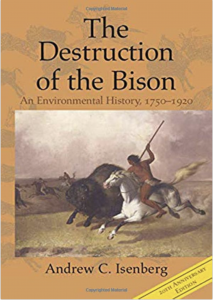
The Destruction of the Bison: An Environmental History, 1750–1920 (Studies in Environment and History)
For the last twenty years, The Destruction of the Bison has been an essential work in environmental history. Andrew C. Isenberg offers a concise analysis of the near-extinction of the North American bison population from an estimated 30 million in 1800 to fewer than 1000 a century later. His wide-ranging, interdisciplinary study carefully considers the multiple causes, cultural and ecological, of the destruction of the species. The twentieth-anniversary edition includes a new foreword connecting this seminal work to developments in the field – notably new perspectives in Native American history and the rise of transnational history – and placing the story of the bison in global context. A new afterword extends the study to the twenty-first century, underlining the continued importance of this ground-breaking text for current, and future, students and scholars.
Great Plains Bison (Discover the Great Plains)
A Project of the Center for Great Plains Studies and the School of Natural Resources, University of Nebraska
Great Plains Bison traces the history and ecology of this American symbol from the origins of the great herds that once dominated the prairie to its near extinction in the late nineteenth century and the subsequent efforts to restore the bison population.
A longtime wildlife biologist and one of the most powerful literary voices on the Great Plains, Dan O’Brien has managed his own ethically run buffalo ranch since 1997. Drawing on both extensive research and decades of personal experience, he details not only the natural history of the bison but also its prominent symbolism in Native American culture and its rise as an icon of the Great Plains. Great Plains Bison is a tribute to the bison’s essential place at the heart of the North American prairie and its ability to inspire naturalists and wildlife advocates in the fight to preserve American biodiversity.
Yellowstone: A Journey Through America’s Wild Heart
Best-selling author David Quammen takes readers on a breathtaking journey through America’s most inspiring and imperiled ecosystem—Yellowstone National Park—in this monumental book on America’s first national park. Yellowstone’s storied past, rich ecosystem, and dynamic landscape are brilliantly portrayed in a captivating mosaic of photographs and eloquently written text that blend history, science, and research from the field. As much a visual ode to nature as an intimate tour of one of the world’s most celebrated conservation areas, this gorgeous book illuminates the park’s treasures grand and small—from the iconic Old Faithful to the rare gray wolf; from misty mountain tops to iridescent springs; and from sweeping valleys to flourishing wild blooms. In four illuminating sections that combine photos, sidebars, and graphics with elegantly crafted text, this book brings readers deeper into the life of the park than ever before, both commemorating its beauty and highlighting its challenges. This book is an essential addition to the National Parks’ 100th anniversary celebration and will remind readers why conservation is worth every effort.
Out West: A Journey through Lewis and Clark’s America
One hundred and eighty years after Lewis and Clark’s “Voyage of Discovery” (1804–1806), Dayton Duncan set out in a Volkswagen camper to retrace their steps. Out West is an account of three separate journeys: Lewis and Clark’s epic adventure through uncharted wilderness; Duncan’s retracing of the historic trail, now in various ways tamed, paved, and settled; and the journey of the American West in the years in between. Readers traveling with Duncan will encounter the people who inhabit today’s West: farmers and ranchers, cowboys and mountain men, Native Americans, residents of dying small towns, city dwellers who have survived cycles of boom and bust. From the Gateway Arch in St. Louis to the Oregon coast, readers will be treated to a landscape as variously impressive as its people.
Raising Bison (Unusual Farm Animals)
Huge herds of bison once covered the western plains, where Native Americans practiced sustainable hunting for centuries. Today, these iconic American animals have been brought back from the brink of extinction, thanks to the efforts of conservationists and ranchers. This book addresses how the undomesticated animals are handled in a farm setting and the ways that herd management and land management are interconnected. Full-color photographs show how these unconventional farm animals are raised as well as how they contribute to the economy.
The Buffalo Hunters: The Story of the Hide Men
In 1867 conservative estimates put the number of buffaloes in the trans-Missouri region at fifteen million. By the end of the 1880s, that figure had dwindled to a few hundred. The destruction of the great herds is the theme of The Buffalo Hunters. Mari Sandoz’s vast canvas is charged with color and excitement—accounts of Indian ambushes, hairbreadth escapes, gambling and gunfights, military expeditions, and famous frontier characters such as Wild Bill Hickok, Lonesome Charlie Reynolds, Buffalo Bill, Sheridan, Custer, and Indian chiefs Whistler, Yellow Wolf, Spotted Tail, and Sitting Bull.
Forty Years on the Frontier
When originally published in 1925, one reviewer called Forty Years on the Frontier “the odyssey of a nineteenth-century Ulysses.” In 1852, Granville Stuart (1834–1918) traveled with his brother and their father to the Sacramento Valley of California, where they spent five years mining for gold and served in the Rogue River War. In 1857 he and his brother started back to Iowa but were delayed by the outbreak of war between the Utah Mormons and the United States. After relocating to Montana’s Deer Lodge Valley, the Stuarts found gold, and news of their discovery sparked the first Montana gold rush in 1862. Stuart was instrumental in developing the Montana cattle industry and was a leader of the vigilantes who captured and executed numerous horse thieves in the summer of 1884.
Stuart’s edited reminiscences are a priceless and authentic account of pioneering, prospecting, and community building in the northern Rockies and Great Plains.
Buffalo Bill’s Life Story: An Autobiography
Buffalo Bill lives deep in American legend. A Kansas-bred farm boy, he went on to become a renowned trapper and hunter, army scout, Indian fighter, and finally a world showman and celebrity. As a man of the Wild West, he became known as a larger-than-life buffalo hunter. As an army scout, he earned the Medal of Honor for gallantry in action. But Bill was unsatisfied. Setting his sights higher yet, he traveled the country performing in Wild West stage shows, and eventually founded “Buffalo Bill’s Wild West,” a terrifically successful traveling production depicting cowboy and Indian life on the plains. Bill’s show earned him large sums of money and drove him to intense national prominence at the turn of the century. This is his story in his own words.
The Buffalo Book: The Full Saga Of The American Animal
The journals and memoirs of 19th century explorers and travelers in the American West often told of viewing buffalo massed together as far as the eye could see. This book appropriately covers the subject of the buffalo as extensively as that animal covered the plains. Other recent accounts of the buffalo have focused on two or three aspects, emphasizing its natural history, the hunters and the hunted in prehistoric time, the relationship between the buffalo and the American Indian. David Dary’s treatment stretches from horizon to horizon. Of course he discusses the origin of the buffalo in North America, its locations and migrations, its habits, its significance and role in both Indian and white cultures, its near demise, its salvation. But more. Dary weaves throughout his fact-filled book fascinating threads of lore and legend of this animal that literally helped mold who and what America is. Further, in addition to detailing the extinction which almost befell this mythic beast and the attempts to give life again to the herds, Dary concentrates significant attention on the buffalo as part of 20th century America in terms of captivity, husbandry, and symbol.
The Buffalo Book rounds up all the contemporary buffalo. Dary has located just about every single buffalo alive today in the United States. He has visited or corresponded with everyone who raises a private or government herd, small or large. He maps their location, size, purpose, future. There are even some instructions about how to raise buffalo if one is so inclined. For the gourmet The Buffalo Book provides a number of recipes, such as Sweetgrass Buffalo and Beer Pie or Buffalo Tips a la Bourgogne. From the buffalo nickel to Wyoming’s state flag, from The University of Colorado’s mascot to Indiana’s state seal, we picture and use the buffalo in hundreds of ways; Dary surveys the 19th and 20th century symbol adaptation of the animal.
The Wind Cave Bison Herd: A Century of Success
The American plains bison, also known as buffalo, is an iconic and keystone Great Plains species. However, they almost disappeared from the face of the earth at the end of the 19th Century. Shortly thereafter, 20 bison were reintroduced to Wind Cave National Park in western South Dakota. A century later the herd not only survives, it prospers. Over 2,500 surplus bison have been shipped to other entities to start or augment other herds; had those bison and their offspring been allowed to procreate to their full potential they would have produced a staggering 140 million animals by the year 2020. This success occurred at the same time the park killed over 1,000 bison in a successful effort to eradicate brucellosis. But Wind Cave’s contribution to the global recovery of bison is only part of the story. The bison reintroduction has been a 100-year experiment, and the park is the laboratory. In addition to describing the fascinating recovery of bison, the book reports the lessons to be learned from a hundred years of conserving a large animal on a relatively small tract of land. For example, throughout the herd’s history, there have been concerns of inbreeding, with many calls for introducing “new blood” into the herd. Yet a century later the descendants of those animals not only survive, they prosper. Yet the weights of the animals appear to be decreasing over at least the past 50 years. A plausible explanation is climate change, yet the data suggest that time itself may be a bigger factor than weather. Are the animals getting smaller in part because they no longer face predators or harsh winters? Are the more successful females those that mature earlier and invest more energy into reproduction versus survival? Could the decrease in body size be a form of insular dwarfism? Although there is a long-term decline in body size, there are short-term variations due to rainfall amounts. Although the herd is very lightly stock, increasing rainfall results in increasing weights. But what is surprising is that the current year’s rain has less correlation than rainfall several years prior. A plausible explanation is that rain 4-7 years back improves the range for the next few years, which improves the condition of cows, which in turn increases calf sizes, which results in heavier yearlings several years after the wet period. Such long-term patterns can only be established with long-term data sets. In that regard, the Wind Cave Bison Herd is a priceless resource and the story needs to be told.
Buffalo Ballad: On the Trail of an American Icon (English and German Edition)
Thunder rolled across the prairie – and then there was silence… It was probably more than 30 million American bison roaming the plains of the Midwest. Nothing was more powerful in the prairie, neither physically nor spiritually. With the arrival of the European settlers massive slaughter began. The (hi)story of the bison is a parable about globalization and the interplay of technological progress, capitalism, and a lack of understanding of ecological contexts. The prairie vanished with the bison. Now the bison returns. And this is not nostalgia. The bison is a real existing and socio-cultural phenomenon. It is a current political issue in the dispute between cattle breeders and the bison lobby.
The photographers traveled through the center of the bison country, from North and South Dakota, Wyoming, Colorado, to Montana. The magical black-and-white photographs of the bison translate the vision into reality. Buffalo Ballad is an homage to the American soul.
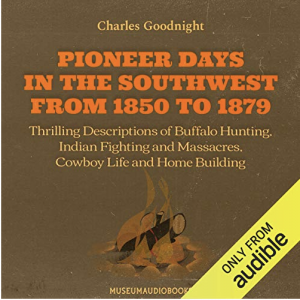
Pioneer Days in the Southwest from 1850 to 1879: Thrilling Descriptions of Buffalo Hunting, Indian Fighting and Massacres, Cowboy Life and Home Building
Pioneer Days in the Southwest from 1850 to 1879 (1909) is an anthology of memoirs by pioneers of the region. The book contains accounts by Emanuel Dubbs (1843-1932), John A. Hart (1790-1840) and Charles Goodnight (1836-1929), the famous cattle rancher who was also known as Charlie Goodnight and the “father of the Texas Panhandle”.
They were the true heroes and heroines who laid the foundation for the future development of the Southwest. Their accounts are filled with plenty of action on subjects like the Battle of Adobe Walls and other Indian fights, hunting expeditions and the challenges of making a living in on the wild frontier.
Public Domain (P)2020 Museum Audiobooks
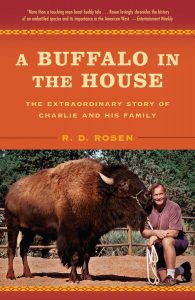
A Buffalo in the House: The Extraordinary Story of Charlie and His Family
A buffalo in the house? Yes, a buffalo. More than a hundred years after her pioneer ancestors hand-raised two baby buffalo to help rescue the species from the brink of extinction, Veryl Goodnight and her husband, Roger Brooks, commit themselves to saving just one. When they welcome an orphaned baby buffalo into their Santa Fe home, they expect him to stay just until he’s old enough to rejoin a herd.
But Charlie becomes a big part of their family life–about two pounds bigger every day.
Surrounded by people and dogs, Charlie has no idea he’s a buffalo–and Roger has no idea how strong the bond between a middle-aged man and a buffalo can be. When Charlie’s eventual introduction to a herd results in a terrible accident, Charlie’s courage and Roger and Veryl’s devotion are pushed to their limits.
Contrasting the nineteenth-century killing of tens of millions of buffalo against our own environmental consciousness, this book asks the question: How far are you willing to go for an animal you love? A love story, a comedy, and a history of the American West, A Buffalo in the House packs a major emotional wallop and will be hard to forget.
“More than a touching man-beast buddy tale . . . Rosen lovingly chronicles the history of an embattled species and its importance in the American West.”
–Entertainment Weekly
“Riveting . . . From the story of one stray baby bison named Charlie . . . and the family that took him in, Rosen has drawn a sweeping history of the American frontier. . . . I can’t remember when I’ve been instructed so gracefully, or entertained to such deep purpose.”
–Jane Kramer, The New Yorker
“Powerful . . . [Charlie is] one of the most memorable characters in recent nature writing.”
–Publishers Weekly (starred review)
“Moving proof of the restorative powers of man’s relationship with nature.”
–People
“If you’re mad for Marley, elated over Elsa the lion, [or] rowdy for Rascal . . . stampede out and get A Buffalo in the House.”
–Huron Daily Tribune
All Our Relatives: Traditional Native American Thoughts about Nature
Through carefully chosen stories from the olden days and art that meticulously reflects traditional designs and colors, Goble provides wonderful insights into the spiritual life of the Plains Indians. His intimate knowledge of their world transports the reader into a vision of the sacred beauty and wisdom that defined traditional Native America.
American bisons, living and extinct
Lang:- english, Pages 306. Reprinted in 2013 with the help of original edition published long back. This book is in black & white, Hardcover, sewing binding for longer life with Matt laminated multi-Colour Dust Cover, Printed on high quality Paper, re-sized as per Current standards, professionally processed without changing its contents. As these are old books, there may be some pages which are blur or missing or black spots. If it is multi volume set, then it is only single volume. We expect that you will understand our compulsion in these books. We found this book important for the readers who want to know more about our old treasure so we brought it back to the shelves. (Customisation is possible). Hope you will like it and give your comments and suggestions. Original Title: American bisons, living and extinct [Hardcover], Original Author: J. A. Allen
Back from the Edge: The American Bison (Animal Odysseys Series)
Describes the history and near-extinction of the American bison or buffalo and its preservation today mainly in parks and preserves.
Barbed Wire: The Fence That Changed the West by Joanne S Liu(2009-11-10)
Before the mid-1800s, much of the American West was a vast expanse of open plains. Native tribes followed buffalo herds unimpeded for hundreds of miles, cowboys ran cattle wherever water and grass led them, and the cattleman�s Law of the Open Range ruled. All this changed when settlers pouring into the West under the Homestead Act of 1862 brought with them the Eastern farmer�s concept of fencing in farms. With the invention and mass production of barbed wire in the 1870s, it soon became possible for homesteaders to fence off millions of acres of what was once open range. But barbed wire threatened the livelihood of the cattlemen who depended on unfenced grasslands, and a clash of cultures was inevitable.
In a style that will capture the interest of adult and teen readers, Barbed Wire: The Fence That Changed the West reveals the surprisingly critical role the invention of barbed wire played in the settling of America. From the legal battles over barbed wire patents to the brutal fencing wars that erupted on the frontier and the ultimate end of the open range, author Joanne Liu tells the fascinating story of how a simple twist of wire transformed a country�s landscape and ushered in a new way of life.
Bison: Symbol of the American West
Easy-to-read facts about bison. Includes 52 outstanding color photos.
Braves and Buffalo: Plains Indian Life in 1837;Plains Indian Life in 1837
The life of Indians on the plains in 1837
Buckskin and buffalo. The artistry of the Plains Indians
Illustrates some of the more exquisite items of the Plains Indians culture in the last century which were derived from buffalo or deer. These range from women s dresses, children’s clothes & men’s ceremonial or war shirts to shields, buffalo robes & blankets. Each piece has its own aesthetic; each one has variety, pattern & vitality & shows the particular traits of the tribe which produced it. Each item is examined in terms of decoration & style of adornment — highlighting the use of materials ranging from porcupine quills & seed beads to eagle, hawk or crow feathers — & the use of particular colors. Reveals the more arcane details of the items illustrated.
Buffalo Coins: America’s Favorite
The American bison, popularly nicknamed the buffalo, is a part of our national history, romance, lore, and legend. In their day bison roamed the plains by the millions. These large and impressive animals, the icons of the American West, were popular subjects of prints, stories, and melodrama. The exploits of Buffalo Bill in the Wild West captivated generations of the young and old alike in the late 1800s and early 1900s. Heavy hunting decimated their populations, though, and before long the American bison was nearly extinct. Today the bison is cherished, and government and other entities have set aside preserves for their use. The danger of extinction has passed. Buffalo Coins: America’s Favorite is the story, still continuing, of these wondrous animals.
Buffalo Days: Stories from J. Wright Mooar (Volume 6) (Texas Heritage Series)
“Because he has been criticized as a destroyer, a ruthless killer, and wastrel of a great game resource of a Nation, the buffalo hunter appeals to the bar of history for his vindication. . . . Within four years we opened up a vast empire to settlement, and put the Indians forever out of Texas.”
J. Wright Mooar tells the story of the buffalo hunter, from the hunter’s perspective, in this first-person account published more than seventy years ago in several installments in Holland’s, The Magazine of the South. Mooar was more than eighty years old when he sat down with Methodist minister/educator James Winford Hunt and recounted his years as a buffalo hunter.
He describes how buffalo hunting became a huge business that thrived for less than a decade in the 1870s and makes the case that the buffalo hunter, more than anyone else, opened the way for white settlement by eradicating the Indians’ source of food.
“Buffalo hunting was a business and not a sport. It required capital, management, and a lot of hard work. Magazine writers and others who claim that the killing of the buffalo was a national calamity and was accomplished by vandals simply expose their ignorance, and I resent such an unjust judgment upon us.
“If it had not been for the work of the buffalo hunters, the wild bison would still graze where Amarillo now is, and the red man would still reign supreme over the pampas of the Panhandle of Texas.
“Any one of the families killed and homes destroyed by the Indians would have been worth more to Texas and to civilization than all the millions of buffalo that ever roamed from the Pecos River on the south to the Platte River on the north.”
“Here is an odyssey of hairbreadth escapes from death with wild Indians, wilder white men, and thundering herds of wild buffalo,” writes J. W. Hunt, founding president of Abilene’s McMurry College (now University), in his introduction.
Illustrated by Texas folklore artist Granville Bruce, the stories of J. Wright Mooar make for lively reading and continuing debate.
Buffalo for the Broken Heart: Restoring Life to a Black Hills Ranch
For twenty years Dan O’Brien struggled to make ends meet on his cattle ranch in South Dakota. But when a neighbor invited him to lend a hand at the annual buffalo roundup, O’Brien was inspired to convert his own ranch, the Broken Heart, to buffalo. Starting with thirteen calves, “short-necked, golden balls of wool,” O’Brien embarked on a journey that returned buffalo to his land for the first time in more than a century and a half.
Buffalo for the Broken Heart is at once a tender account of the buffaloes’ first seasons on the ranch and an engaging lesson in wildlife ecology. Whether he’s describing the grazing pattern of the buffalo, the thrill of watching a falcon home in on its prey, or the comical spectacle of a buffalo bull wallowing in the mud, O’Brien combines a novelist’s eye for detail with a naturalist’s understanding to create an enriching, entertaining narrative.
The Long Hunt: Death of the Buffalo East of the Mississippi
Folklore, archaeological data, and first-person narratives contrast the wanton destruction of the eastern buffalo with the spirit and heroism of the early frontier.
Buffalo Jones: The Man Who Saved America’s Bison
Recounts the story of Charles Jesse “Buffalo” Jones, a buffalo hunter who undertook a treacherous nineteenth-century Texas trail ride and risked his life to rescue baby buffalo and save their species from extinction.
Camas & Sage: A Story of Bison Life on the Prairie
In Camas and Sage: A Story of Bison Life on the Prairie, kids are invited to explore and discover the northern plains in a truly unique way: through the eyes and ears of a bison calf. From Camas’s first attempt to stand on wobbly legs, this tale of an adventure-filled first year will have young readers hooked. Full-color illustrations splash across the page, illuminating each of Camas’s firsts, including encounters with rascally prairie dogs, a crackling and booming thunderstorm, and irritable bulls. Kids won’t want to wait to turn the page to see what happens next!
Seasoned writer Dorothy Patent doesn’t leave anyone out of the fun. Sidebars brimming with interesting historical and natural history tidbits about the plants, animals, and humans with which the bison shares the prairie will intrigue older kids and adults. Topics range from the usefulness of dewclaws to the threat of wolves to the answer to whether the animals are actually bison or buffalo. Part fun narrative, part natural history, Camas and Sage: A Story of Bison Life on the Prairie clearly illustrates why the bison is North America’s most iconic prairie animal.
Charles Goodnight: A Man for All Ages
This book explores Charles Goodnight’s history and offers insight into the life of the legend. He establishes himself as one of the pioneers of the cattle industry in the Texas Panhandle, as well as a leader in plains conservation.
Charles Goodnight: Cowman and Plainsman
An exciting story of a Texas Ranger, adventurer, and immigration officer who became a symbol of his age while gambling with death in the wild frontier regions of Texas, Arizona, and Old and New Mexico. Charles Goodnight knew the West of Jim Bridger, Kit Carson, Dick Wooton, St. Vrain, and Lucien Maxwell. He ranged a country as vast as Bridger ranged. He rode with the boldness of Fremont, guided by the craft of Carson. His vigorous zest for life enabled him to live intensely and amply, and in this book by J. Evetts Haley, himself no stranger to the West, provides a fully readable and important western biography, vividly told, thrilling, witty, and completely authentic.
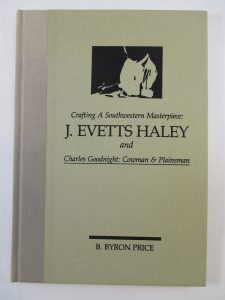
Crafting a Southwestern Masterpiece: J. Evetts Haley and Charles Goodnight: Cowman & Plainsman
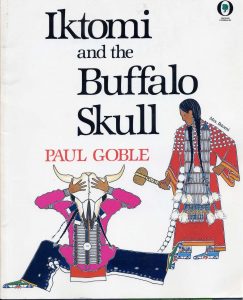
Iktomi And The Buffalo Skull (Orchard Paperbacks)
Iktomi, the Plains Indian trickster, interrupts a powwow of the Mouse People and gets his head stuck in a buffalo skull. Asides and questions printed in italics may be addressed by the storyteller to listeners, encouraging them to make their own remarks about the action.Iktomi, the Plains Indian trickster, interrupts a powwow of the Mouse People and gets his head stuck in a buffalo skull, and his wife must come to his aid
Land of the Buffalo Bones: The Diary of Mary Ann Elizabeth Rodgers, An English Girl in Minnesota, New Yeovil, Minnesota 1873 (Dear America Series)
After following her father from their home in England to the plains of Minnesota, Mary must summon the strength to face the challenges and heartbreaking losses that she and her family encounter.
“Land of the Buffalo Bones” is the diary of Mary Rodgers, known as Polly. Promising religious freedom and fertile land, Polly’s father, Reverend Rodgers, moves their Baptist community from England to the Minnesota prairie. After a treacherous journey across the sea and across this country, Polly finds that it is no paradise at all. Written with incredible heart and compassion, insight and sensitivity, Marion Dane Bauer has created one of the most sophisticated and courageous characters DEAR AMERICA has seen.
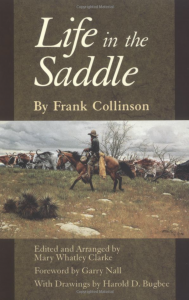
Life in the Saddle (Volume 21) (The Western Frontier Library Series)
Englishman Frank Collinson went to Texas in 1872, when he was seventeen, to work on Will Noonan’s ranch near Castroville. He lived the rest of his life in the southwestern United States and at the age of seventy-nine began writing about the Old West he knew and loved. He had a flair for writing, a phenomenal memory, and a passion for truth that is evident in what he wrote and said.
His writings for Ranch Romances, his letters, and transcriptions of his conversations have been arranged here in roughly chronological order, so that their importance for frontier history is readily apparent. Collinson ranged the West in his writings as he did in person, telling of the last tragic days of buffalo hunting on the Plains; clashes between hunters or cowboys and the Plains Indians; the character of trail drivers; and the definitive nature of violence, particularly at gun-point.
J. Frank Dobie said of Collinson: “In the realm of frontier chronicles, the writing of educated Englishmen. . . men with the perspective of civilization, with imagination, and a lust for primitive nature, stand out. To this class of men belongs Frank Collinson.”
Mr. Hornaday’s War: How a Peculiar Victorian Zookeeper Waged a Lonely Crusade for Wildlife That Changed the World
He was complex, quirky, pugnacious, and difficult. He seemed to create enemies wherever he went, even among his friends. A fireplug of a man who stood only five feet eight inches in his stocking feet, he began as a taxidermist and an adventurer who tracked tigers in Borneo with friendly headhunters, lead crocodile-hunting expeditions in the Orinoco, and scouted the last remaining bison in the Montana territories.
William Temple Hornaday (1854–1937) was also a man ahead of his time. He was the most influential conservationist of the nineteenth century, second only to his great friend and ally Theodore Roosevelt. When this one-time big-game collector witnessed the wanton destruction of wildlife prevalent in the Victorian era, he experienced an awakening and devoted the rest of his life to protecting our planet’s endangered species. Hornaday founded the National Zoo in Washington, D.C., served for thirty years as director of the renowned Bronx Zoo, and became a fierce defender of wild animals and wild places. He devoted fifty years to fighting gun manufacturers, poachers, scandalously lax game-protection laws, and the vast apathy of the American public. He waged the “Plume Wars” against the feathered-hat industry and is credited with having saved both the Alaskan fur seal and the American bison from outright extinction.
Mr. Hornaday’s War restores this major figure to his rightful place as one of the giants of the modern conservation movement. But Stefan Bechtel also explores the grinding contradictions of Hornaday’s life. Though he crusaded against the wholesale slaughter of wildlife, he was at one time a trophy hunter, and what happened in 1906 at the Bronx Zoo, when Hornaday displayed an African man in an “ethnographic exhibit,” shows a side of him that is as baffling as it is repellant. This gripping book takes an honest look at a fascinating, enigmatic man who both represented and transcended his era’s paradoxical approach to wildlife, and who profoundly changed the course of the conservation movement for generations to come.
No Turning Back: The Art of Veryl Goodnight
Pemmican Empire: Food, Trade, and the Last Bison Hunts in the North American Plains, 1780–1882 (Studies in Environment and History)
In the British territories of the North American Great Plains, food figured as a key trading commodity after 1780, when British and Canadian fur companies purchased ever-larger quantities of bison meats and fats (pemmican) from plains hunters to support their commercial expansion across the continent. Pemmican Empire traces the history of the unsustainable food-market hunt on the plains, which, once established, created distinctive trade relations between the newcomers and the native peoples. It also resulted in the near annihilation of the Canadian bison herds north of the Missouri River. Drawing on fur company records and a broad range of Native American history accounts, George Colpitts offers new perspectives on the market economy of the western prairie that was established during this time, one that created asymmetric power among traders and informed the bioregional history of the West where the North American bison became a food commodity hunted to nearly the last animal.
Plains Indians (Dog Soldiers, Bear Men & Buffalo Women)
Return of the Buffalo: The Story Behind America’s Indian Gaming Explosion
A small, poverty-stricken California Indian Tribe, the Cabazon Band of Mission Indians, successfully fought a long legal battle for the right to operate the business of their choice on their barren reservation―a gambling casino. This is their story, the authorized history of their epic struggle, climaxing with their victory in a 1987 ruling by the U.S. Supreme Court, the now-famous Cabazon Decision. Their defeated opponents included California’s City of Indio and County of Riverside (called one of the most racist in the U.S. by a non-Indian resident) as well as California and 29 other states that joined California’s appeal.
This is also the fascinating story of the role played by a white family and its radical, socialist patriarch that helped create one of the world’s most capital-intensive industries and triggered today’s Indian Gaming Explosion throughout America. Hundreds of hours of taped interviews and years of documents, meeting records, and official correspondence are analyzed to give the reader a clear picture of the impact of this new massive capital on tribal life and the development of a possible future without gambling―as officials in league with Nevada and Atlantic City gambling interests continue their efforts to destroy Indian gaming. The Buffalo, literal and symbolic figure of earlier Indian financial independence, has returned in a new form―cash cow casinos.
The Return of the Buffaloes: A Plains Indian Story about Famine and Renewal of the Earth
The Return of the Buffaloes celebrates the close, mystical relationship between the Lakota people and the buffalo.
Return of the Buffalo Hunter (Black Horse Western)
Wade Guthrie is a menacing man. Turning away from the life of a Texas Ranger after murdering the entire family of a wanted man, he became an outlaw with a deadly gang by his side. The gruesome group get wind of a man known only to most as O’Brien. A buffalo hunter and a trapper, he just wants a quiet life without looking for trouble… But he didn’t expect his wife, Sarah, to have a terrifying experience with two of Guthrie’s men! That encounter, following a string of deaths at a Wells Fargo depot, leads the local sheriff to request O’Brien’s help. Unexpectedly, O’Brien must assume the role of a lawman and carry iron against a dangerous foe. Will he be able to get to grips with this man without a conscience?
The Border And The Buffalo: An Untold Story Of The Southwest Plains (1907)
This scarce antiquarian book is a facsimile reprint of the original. Due to its age, it may contain imperfections such as marks, notations, marginalia and flawed pages. Because we believe this work is culturally important, we have made it available as part of our commitment for protecting, preserving, and promoting the world’s literature in affordable, high quality, modern editions that are true to the original work.
BUFFALO COOKBOOK
A low fat cookbook providing delectable dishes with buffalo or bison as the unusual and tasty alternative to beef.Three years later and tofued into oblivion, David and I were in South Dakota, as David was commissioned to do the painting for Mt. Rushmore’s fiftieth-anniversary celebration. Numerous local eateries were serving buffalo burgers and other bison specialities–touting this game as a healthy alternative to beef. The claims were accurate; there was virtually no fat present in the meat. Buffalo/bison became the salvation of our dietary dilemma.
The Buffalo Hunters (American Indians)
Examines the history and culture of the Great Plains Indians, describes their handicraft, and looks at the ceremonies and traditions that continue today
Scotty Philip, the man who saved the buffalo
James “Scotty” Phillips came to America from his native Scotland in 1874 when he was 16. From there he led an extraordinary life in the army, state senate, and as the man that saved the buffalo from extinction.
The Buffalo Nickel
Taylor Morrison reveals the history and making of the buffalo nickel through the story of its creator, American sculptor James Fraser. As a boy growing up in the Dakota Territory, Fraser witnessed the virtual extinction of the buffalo and the effect their loss had on the Plains Indians. As an adult, he honored both in his sculptures and his design for the buffalo nickel. Morrison’s striking illustrations capture the broad sweep of the landscape and demonstrate the intricate process by which coins are designed and minted.
The Last of the Buffalo Return to the Wild
The Last of the Buffalo Return to the Wild commemorates Banff National Park’s role in preserving the last of North America s buffalo while also celebrating return of the species to the wilds of Banff National Park.
This beautifully presented hardcover book with a gold foil inlay is filled with interesting essays and historic images.
In a pocket inside the backcover is an exact reproduction of a 1909 booklet created by Norman Luxton that tells the story of the Pablo-Allard through his own lively writing and magnificent panoramic images.
The Last of the Buffalo Return to the Wild includes the following essays:
– the story of the present day Buffalo Treaty among Canadian first nations and American tribes as told by Leroy Little Bear
– an historical overview of the causes of the nearly complete disappearance of the plains bison by historian George Colpitts
– an appreciation of the archival records that surround Norman Luxton’s participation in the bison roundup by archivist Jennifer Rutkair
– the story of saving plains bison from extinction and the evolution of thinking that has led to the imminent restoration of plains bison to Banff National Park by author and conservationist Harvey Locke.
At the heart of this book is the story of the purchase, roundup, and shipment to Canada of the largest plains bison herd that emerged from those early conservation efforts, sometimes known as the Pablo-Allard herd. This herd of several hundred genetically pure plains bison was located in the Flathead Valley of Montana and became the largest in the world. By 1905 its owner, Michel Pablo, had to sell the entire herd; the US government declined to buy it, so the Canadian government stepped in. It was a remarkable event that had consequences of global significance for the conservation of plains bison.
The Last of the Plainsmen and Last of the Great Scouts
From the legendary author of the west Zane Grey, writing with Helen Cody Wetmore: two complete novels in one low-priced edition
The Last of the Plainsmen
Zane Grey, chronicler of the greatest adventures of the West, and Buffalo Jones, last of the plainsmen, that tough breed who followed their dreams west, into the empty spaces of the untamed heart of the country. The land draws these men.
The unsettled West is fast-disappearing, along with the wild creatures who call it home. This historical novel chronicles the last mission of the last of the plainsmen, the adventure that brought the West to vivid life for Zane Grey: track buffalo, mustang, and cougar, and bring them back, not as trophies, but alive and kicking!
The Last of the Great Scouts
The life story of Colonel William F. Cody, “Buffalo Bill,” as told by his sister, Helen, and Zane Grey. This biographical novel begins with Bill’s boyhood in Iowa and his first encounter with an Indian. We see him as a pony express rider, then near Fort Sumter as Chief of the Scouts, and later engaged in the most dangerous Indian campaigns. There is also an account of the travels of Cody’s famous Wild West Show. Few other characters in public life make a stronger appeal to the imagination of America than Buffalo Bill, whose daring and bravery made him famous.
The True Story of Nickel: The Baby Buffalo Who Thought He Was A Dog
True adventures of an orphaned bison calf raised by a park caretaker and his family. Learn how Nickel got his name and why he lost his horns in this hilarious, warm story about the friendly bison. Vivid watercolor illustrations and interactive website with thematic teachers guide make this book perfect for classroom or campfire.
Gotta Go, Buffalo: A Silly Book of Fun Goodbyes (Lucy Darling)
Make goodbyes fun with animal rhymes and colorful lift-the-flap illustrations!
“So long!” “See you later!” There are so many ways to say goodbye! Lift the flaps in this colorful book to discover favorite animals (and maybe a few new ones, too) and fun goodbyes. Children and grown-ups alike will be giggling before you can say, “Toodle-Loo, Kangaroo!”
Where the Buffaloes Begin
“Over the blazing campfires, where the wind moaned eerily through the thickets of juniper and fir, they spoke of it in the Indian tongue—the strange lake to the southward whose waters never rest. And Nawa, the medicine man, who had lived such countless moons that not even the oldest member of his people could remember a time when Nawa was not old, declared that, if only you arrived at the right time, on the right night, you would see the buffaloes rise out of the middle of the lake and come crowding to the shore; for there, he said, was the sacred spot where the buffaloes began.”
Ten-year-old Little Wolf, an imaginative and courageous boy, is determined to observe this spectacle, and his quest leads not only to a miraculous vision but also to the salvation of his tribe. This Caldecott Honor picture book and National Book Award nominee was hailed by Booklist as “an eminent picture book and, incidentally, one that proves that black and white can move as forcefully as color.” The New York Times praised artist Stephen Gammell for his “spectacular scenes of tumbling clouds, of earth churned by flying hoofs, of teepees in the early dawn. But most of all he conveys the hulking, surging, rampaging strength of the shaggy buffaloes as they rise out of a shadowy mist, the mist of legend or dream.”
Where the Buffalo Roam Loth
Frank and Deborah Popper–he a land-use expert, she a geographer–propose restoring to its natural state and to the buffalo some 149,000 square miles of American prairie currently inhabited by approximately 400,000 people. Matthews gives equal time to the Poppers’s vociferous opposition, taking readers on an exhilirating tour through a whopping controversy.
The Girl Who Sang to the Buffalo: A Child, an Elder, and the Light from an Ancient Sky
A haunting dream that will not relent pulls author Kent Nerburn back into the hidden world of Native America, where dreams have meaning, animals are teachers, and the “old ones” still have powers beyond our understanding.
In this moving narrative, we travel through the lands of the Lakota and the Ojibwe, where we encounter a strange little girl with an unnerving connection to the past, a forgotten asylum that history has tried to hide, and the complex, unforgettable characters we have come to know from Neither Wolf nor Dog and The Wolf at Twilight.
Part history, part mystery, part spiritual journey and teaching story, The Girl Who Sang to the Buffalo is filled with the profound insight into humanity and Native American culture we have come to expect from Nerburn’s journeys. As the American Indian College Fund has stated, once you have encountered Nerburn’s stirring evocations of America’s high plains and incisive insights into the human heart, “you can never look at the world, or at people, the same way again.”
The Legend Of the White Buffalo Woman
The Legend of White Buffalo Woman tells the inspiring story of the first peace pipe, presented to the Lakota people to connect them to the Great Spirit, who will guide them through the hardships of life.
